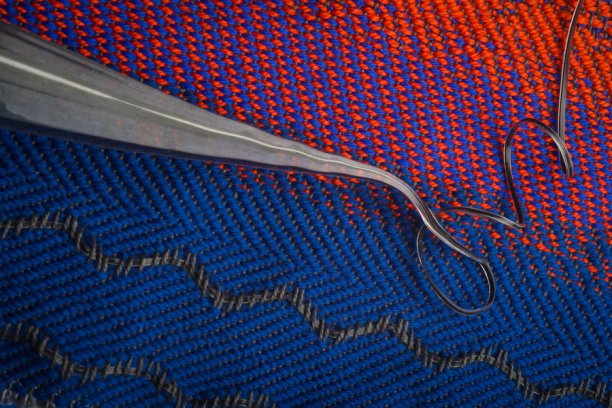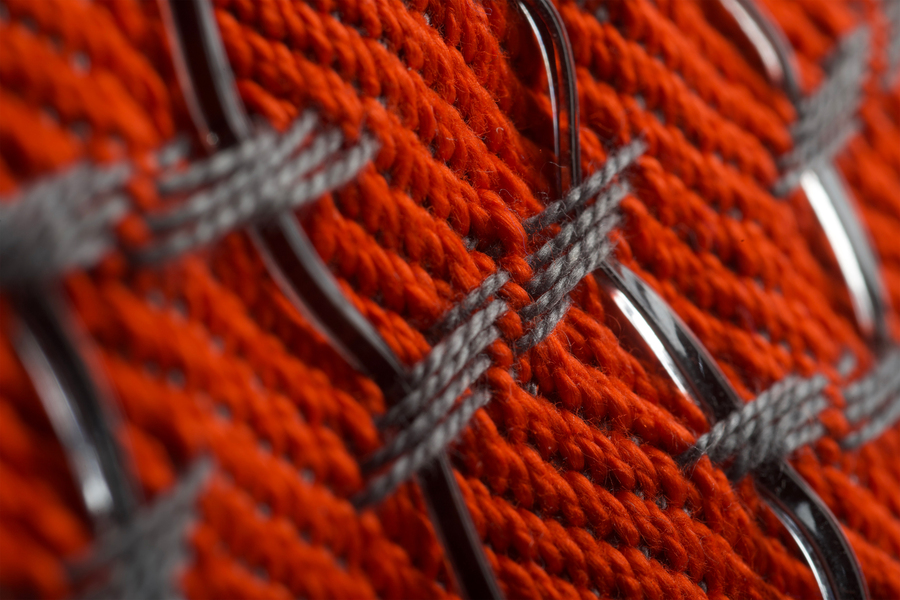
Composites UK turns 30
Flexible fibre bends with a fabric like seaweed on the ocean’s surface while producing an electrical output.

21st March 2022
Innovation in Textiles
|
Cambridge, MA. USA
Engineers at MIT and collaborators at Rhode Island School of Design have developed a fabric that works like a microphone, converting sound first into mechanical vibrations, then into electrical signals in a similar way to how the ears work.
All fabrics vibrate in response to audible sounds, though these vibrations are on the scale of nanometres – far too small to ordinarily be sensed. To capture these imperceptible signals, the researchers created a flexible fibre that, when woven into a fabric, bends with the fabric like seaweed on the ocean’s surface.
The fibre is designed from a piezoelectric material that produces an electrical signal when bent or mechanically deformed, providing a means for the fabric to convert sound vibrations into electrical signals.
It can capture sounds ranging in decibels from a quiet library to heavy road traffic, and determine the precise direction of sudden sounds like handclaps. When woven into a shirt’s lining, the fabric can also detect a wearer’s subtle heartbeat features.
The fibres can also be made to generate sound, such as a recording of spoken words, that another fabric can detect.
A study detailing the team’s design has been published in Nature and lead author Wei Yan, who helped develop the fibre as an MIT postdoc, sees many potential applications.
“Wearing an acoustic garment, you might talk through it to answer phone calls and communicate with others,” said Yan, who is now an assistant professor at the Nanyang Technological University in Singapore. “In addition, this fabric can imperceptibly interface with the human skin, enabling wearers to monitor their heart and respiratory condition in a comfortable, continuous, real-time, and long-term manner.”
Sound layering
Fabrics are traditionally used to dampen or reduce sound – examples include soundproofing in concert halls and carpeting in our living spaces. Professor Yoel Fink and his team at MIT have worked for years to refashion fabric’s conventional roles with a focus on extending properties to enable more functions. In looking for ways to make sound-sensing fabrics, the team took inspiration from the human ear.

Audible sound travels through air as slight pressure waves. When these waves reach the ear, an exquisitely sensitive and complex three-dimensional organ, the tympanic membrane, or eardrum, uses a circular layer of fibres to translate the pressure waves into mechanical vibrations. These vibrations travel through small bones into the inner ear, where the cochlea converts the waves into electrical signals that are sensed and processed by the brain.
Inspired by the human auditory system, the team sought to create a fabric “ear” that would be soft, durable, comfortable, and able to detect sound. Their research led to two important discoveries – such a fabric would have to incorporate stiff, or high-modulus fibres to effectively convert sound waves into vibrations, and the team would have to design a fibre that could bend with the fabric and produce an electrical output in the process.
With these guidelines in mind, the team developed a layered preform made from a piezoelectric layer as well as ingredients to enhance the material’s vibrations in response to sound waves. The resulting preform, was then heated and stretched into thin, 40-metre-long fibres.
Lightweight listening
The researchers tested the fibre’s sensitivity to sound by attaching it to a suspended sheet of polyester film. They used a laser to measure the vibration of the sheet – and by extension, the fibre – in response to sound played through a nearby speaker. In response, the fibre vibrated and generated an electric current proportional to the sound played.
“This shows that the performance of the fibre on the membrane is comparable to a handheld microphone,” said researcher Grace Noel.
The team blended the fibre with conventional yarns to produce panels of drapable, machine-washable fabric, sewing one to the back of a shirt, and testing its sensitivity to directional sound by clapping while standing at various angles it.
The fabric was able to detect the angle of the sound to within one degree at a distance of three metres away.
The researchers believe that a directional sound-sensing fabric could help those with hearing loss to tune in to a speaker in noisy surroundings.
The team also stitched a single fibre to a shirt’s inner lining, just over the chest region, and found it accurately detected the heartbeat of a healthy volunteer, along with subtle variations in the heart’s S1 and S2, or “lub-dub” features. In addition to monitoring the heartbeat, Fink sees possibilities for incorporating the acoustic fabric into maternity wear to help monitor a baby’s fetal heartbeat.
The researchers then reversed the fibre’s function to serve not as a sound-detector but as a speaker. They recorded a string of spoken words and fed the recording to the fibre in the form of an applied voltage. The fibre converted the electrical signals to audible vibrations, which a second fibre was able to detect.
In addition to wearable hearing aids, clothes that communicate, and garments that track vital signs, the team sees applications beyond clothing.
“It can be integrated with spacecraft skin to listen to (accumulating) space dust, or embedded into buildings to detect cracks or strains,” Yan said. “It can even be woven into a smart net to monitor fish in the ocean. The fibre is opening widespread opportunities.”
“The learnings of this research offer quite literally a new way for fabrics to listen to the body and to the surrounding environment,” Fink concluded.

Business intelligence for the fibre, textiles and apparel industries: technologies, innovations, markets, investments, trade policy, sourcing, strategy...
Find out more